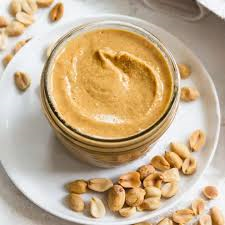Macronutrients: Fat
- Rebecca
- Apr 7, 2020
- 4 min read
In the second instalment of my macronutrient blogs, I’m going to cover fat. Similar to our good friend the carbohydrate, it’s another food group that is often demonised; people assume that eating fat makes you fat, right? WRONG! Fats are needed for vital functions in the body and we need a certain amount for these to occur, not to mention a lot of sources are pretty tasty...peanut butter addict here!
There’s a lot more to consider around this important nutrient so I shall try to break it down and give some basic guidelines to follow.

Function: An important function (especially for us Brits) is for warmth. Fat under the skin, called subcutaneous fat, prevents heat loss and therefore helps to maintain the body at an optimal temperature. Without this layer, our bodies lose heat and if the core temperature drops too much, you won’t only just feel cold, but bodily processes can start to malfunction too. In addition, there is a layer of fat that is needed to protect vital organs, such as the liver and kidneys. However, it is important to note that if too much fat, particularly saturated, is consumed, this can build up in the arteries leading to issues such as heart disease- again a topic to cover in more detail later on!
Back to the positives; fat provides us with energy! It contains 9 calories per gram compared to that of carbohydrates and protein, which both provide 4. This may be advantageous when considering fuelling for activity but is an important consideration for weight management as it’s calorie density can lead to an energy imbalance and weight gain.

Fat is also needed for the transport and absorption of key vitamins. For example, vitamins A, D, E and K are only soluble in fat. They require a supply of fat to be absorbed and transported around the body to carry out their functions. Without fat, the vitamins cannot carry out their roles, leading to problems with bone growth, repair and reproduction, nail formation and kidney function- eek! And for those of you who are more concerned with your appearance (even during this current isolation period!) it’s important to note that fat prevents water loss by evaporation so helps the skin remain plump and hydrated!
Fatty acids Omega 3 and 6, can only be obtained from the diet and perform vital roles in the reproductive, immune and neural systems. They are also precursors for a group of compounds called eicosanoids and prostaglandins (bit of a mouthful sorry!). Eicosanoids and prostaglandins play an important part in cell functions, regulating inflammation, blood pressure and body temperature as well as fighting infection and blood clotting; no wonder they are called “essential” fatty acids! Unfortunately, this type cannot be synthesized by the body so must be obtained by the diet, which I shall tell you more about below.
Now there isn’t just one type of fat, in fact there are a few and they all have different structures. Let’s have a look in a bit more detail…
Structure: The building blocks of fat (or technically, lipid) are fatty acids and glycerol. Fatty acids found in foods and fats stored in the body are mainly present in the form of triglycerides; a glycerol molecule backbone with three, often different, fatty acid chains attached. (Image below showing the glyercol and fatty acis F1,2,3)

A fatty acid is made up of a carbon chain to which an acid group and hydrogen atoms are attached. The number of hydrogen atoms attached depends on the type of bonds present and ultimately whether it is classed an “saturated” or “unsaturated”.
If there are no double bonds present, each carbon is “saturated” with hydrogen atoms. In unsaturated fats, some of the carbon atoms are attached by double bonds, therefore replacing a hydrogen. If one double bond is present it is a monounsaturated fat and if more than one are present it is a polyunsaturated fat- you may have heard of these or read them on food labels?!
Furthermore, there are 2 types of polyunsaturated fatty acids- cis or trans. Cis is the natural form and trans is the manufactured form which is now being reduced in the food industry due to its detrimental effects on health. Omega 3 and 6 as mentioned earlier are cis fatty acids.
Ok enough chemistry for now!
To help visualise what saturated and unsaturated fats are, think of the actual structure of the foods we see. Saturated fats tend to be solid at room temperature, whereas unsaturated are usually liquid. Let’s look at some examples…

Sources: Saturated fats tend to come from animal sources such as meat and dairy. E.g. beef, lamb or pork, whole milk, cheese, butter and lard. However, there are some plant based sources such as coconut oil. These are often the base of foods such as chocolate, cakes and pies…so think about the ingredients of what you are eating.
Unsaturated fats are usually liquid at room temperature and are mainly derived from plant sources such as rapeseed, olive and sesame oil, which are monounsaturated. Polyunsaturated can be found in sunflower and safflower oils. Our essential fatty acids, omega 3 and 6, can be found in oily fish such as salmon and mackerel, nuts, seeds, avocados and soya beans.


The nasty trans fatty acids can be found in processed foods but can also be found naturally in the gut of ruminants (cattle and sheep) so there are often traces in dairy products. Take a look at your food labels to see the breakdown as you may be surprised!
How much?
The government recommends that fat intakes should make up around a third of our diet and should be no more than 35% of our calorie intake. Of this 35%, it is recommended that saturated fat intake should be no higher than 11%, due to its link to diseases such as heart disease and cancers. Trans fats should not make up more than 2% of energy intake. In actual amounts, using the basic value of 2000 calories per day this would mean around 67-73g of fat per day (as fat is 9 calories per gram), with around 20g being saturated and around 4g trans fat. The is for the general population so individual requirements may vary, but it is widely accepted for the majority.
Here are some examples of the average amount of fat found in common foods- REMEMBER NOT ALL FAT IS BAD. Check the labels and aim for heart healthy mono or polyunsaturated fats, remembering to stay within daily guidelines.











Comments